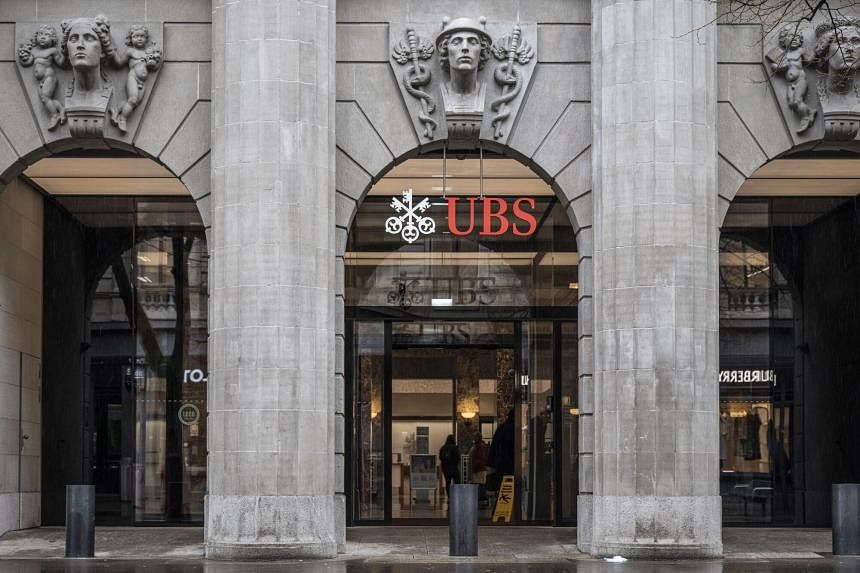On the first anniversary of UBS Group’s historic takeover of its former rival Credit Suisse in 2023, it is becoming clear just how advantageous the deal has been for the bank. It has pushed its market capitalisation past US$100 billion (S$134 billion), the highest level in almost 16 years, and cemented its leading role in global wealth management.
The most obvious effect for the Swiss lender is a growth in scale that would have required many years of painstaking work building client relationships if it were to be achieved organically. Overnight, the client funds managed by its wealth unit jumped by about one-fifth to US$3.4 trillion at the time.
This has brought it closer to Morgan Stanley, which has about US$5 trillion in its wealth management division, even if UBS is bigger in most places outside the United States.
The share price boost to UBS was not a given one year ago when the emergency takeover brokered by the Swiss government was announced. The Zurich-based bank’s shares initially plunged by as much as 16 per cent amid uncertainty over what the deal would mean for UBS, pushing its valuation down to below US$60 billion.
The jitters did not last long as investors looked at the bargain price tag, the presence of a government guarantee, and the immediate boost to scale from Credit Suisse’s client book. Some observers called it the deal of the century.
In the year since, UBS’ leadership has returned the guarantee, carved off much of the Credit Suisse assets it does not want, and begun the task of figuring out how the merger can turbocharge its ambitions.
With the scale added by the Credit Suisse deal has come a push for even more. The bank now seeks to grow invested assets in its wealth management unit to more than US$5 trillion by the end of 2028, equal to an expansion of about US$1.2 trillion over the current level.
The core of UBS is the business of looking after the cash piles of the global rich, with the amount of managed client money towering above those of its regional peers. The Americas account for about half of that amount, while Switzerland, Asia and the Europe, Middle East and Africa regions roughly share the rest equally between them.
The breakdown helps explain the Swiss lender’s current focus on a place where it is big but still remains sub-scale compared with the domestic competition. UBS chief executive Sergio Ermotti has signalled that catching up with Wall Street rivals on their home turf will be a key part of his strategy for the coming years.
The latest attempt by UBS to “narrow the gap” on Morgan Stanley and its peers, as Mr Ermotti put it last week, comes after a failed previous effort to add heft in the US, a US$1.4 billion deal to buy robo-adviser Wealthfront. That plan had been abandoned by the time Mr Ermotti returned to lead UBS in 2023.
UBS’ valuation, as measured by the so-called price-to-book ratio, still lags behind its rival’s by a substantial amount.
“We have the cost base of a much larger organisation in the US, but we don’t have the capabilities yet that allow us to fully leverage our global franchise,” Mr Ermotti said. “We need to have a better footprint in the US.”
This time around, the strategy hinges on using the newly enlarged investment bank to bring more global products and services to US clients.
UBS does not conceal that there is still much work ahead in integrating Credit Suisse. Both Mr Ermotti and chairman Colm Kelleher have warned that 2024 will be a more difficult year in terms of keeping costs down. One of the biggest challenges will be to switch off the rival’s information technology systems and get the data to run on UBS’.
Two straight losses, in the last two quarters of 2023, have also focused attention on profitability. An activist investor, Cevian Capital, has built a substantial stake in UBS and signalled that it will push for ambitious targets. UBS’ promise to achieve a return of 18 per cent on a measure of regulatory capital known as common equity tier 1 by 2028 did not excite analysts when it was rolled out in February.
For what it is worth, the market for the risky debt securities that were wiped out by the Credit Suisse emergency deal is running as hot as it has been for years. The Swiss regulators at the time cancelled all of Credit Suisse’s so-called additional tier 1 (AT1) bonds worth about US$17 billion, essentially sweetening the deal for UBS.
The decision initially crimped the market as investors reassessed the riskiness of the securities, but they later returned in droves when they decided the Credit Suisse case had unique features that did not apply to the asset class as a whole.
The spread on one key Bloomberg index of such notes has fallen to its lowest level in nearly two years. This has allowed European banks to pump out US$12.1 billion of AT1s in 2024 so far, making it the second-strongest quarter for the product ever.
UBS is also still getting used to its new role as the sole globally systemically important bank in Switzerland, where its balance sheet represents more than twice the domestic economy. The government is due to present an overhaul of financial supervision in the coming months, and a debate on the necessity of stricter capital and liquidity requirements for the behemoth bank is under way.
The domestic banks were helped through the uncertainty of the Credit Suisse rescue by rising interest rates and the backing of the government for the rescue solution, said Swiss Bankers Association CEO Roman Studer.
“One year on, we have seen less change than one could have envisaged,” he said. “Despite the collapse of Credit Suisse, we have seen enduring stability and a successful banking centre.” BLOOMBERG

